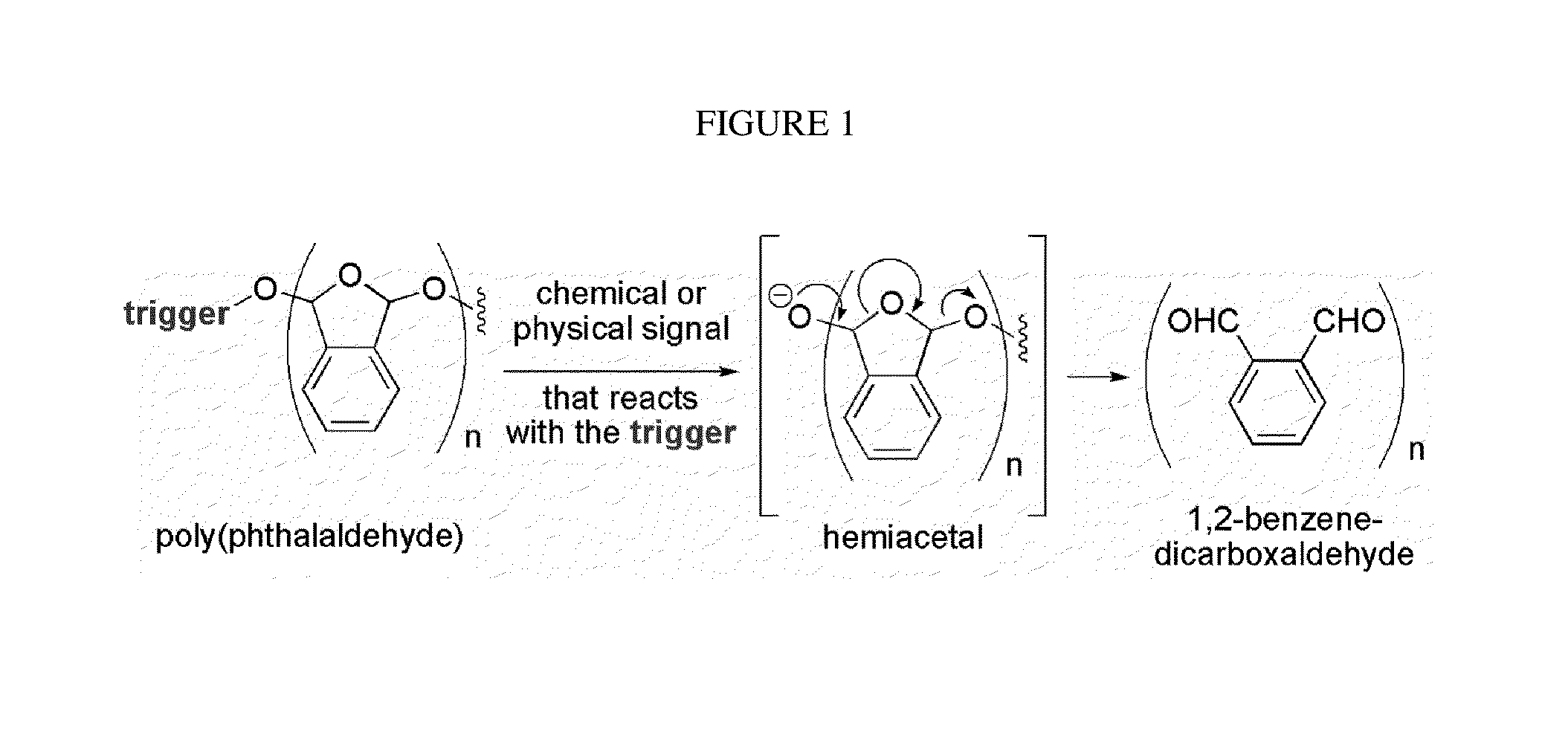Signal-responsive plastics
a technology of plastics and signs, applied in the field of polymers, can solve the problems that the most responsive materials currently available cannot behave with such sensitivity and specificity, and achieve the effect of controlling depolymerization
- Summary
- Abstract
- Description
- Claims
- Application Information
AI Technical Summary
Benefits of technology
Problems solved by technology
Method used
Image
Examples
Embodiment Construction
I. Signal-Responsive Polymers and Their Uses
[0027]It should be noted that throughout this disclosure the terms “end-cap,”“trigger,” and “triggering group” are used interchangeably and are separate from “capping group.” Various principles and advantages of the invention may be shown using the example of poly(phthalaldehyde). Of course, it will be understood that embodiments of the invention are not limited to poly(phthalaldehyde) or its derivatives. Those of skill in the art will recognize that the ceiling temperature of poly(phthalaldehyde) without an end-capping group (i.e., the hemiacetal form shown in FIG. 1) is −40° C. In the presence of an end-capping group (e.g., acetate), however, the polymer is stable up to 180° C.
[0028]Our responsive polymers take advantage of this difference in stability. The literature teaches how to prepare poly(phthalaldehydes) with capping groups and end-caps that are unresponsive to applied chemicals. These capping groups and end-caps are purposely ma...
PUM
| Property | Measurement | Unit |
|---|---|---|
| temperature | aaaaa | aaaaa |
| temperatures | aaaaa | aaaaa |
| Mn | aaaaa | aaaaa |
Abstract
Description
Claims
Application Information
 Login to View More
Login to View More - R&D
- Intellectual Property
- Life Sciences
- Materials
- Tech Scout
- Unparalleled Data Quality
- Higher Quality Content
- 60% Fewer Hallucinations
Browse by: Latest US Patents, China's latest patents, Technical Efficacy Thesaurus, Application Domain, Technology Topic, Popular Technical Reports.
© 2025 PatSnap. All rights reserved.Legal|Privacy policy|Modern Slavery Act Transparency Statement|Sitemap|About US| Contact US: help@patsnap.com



